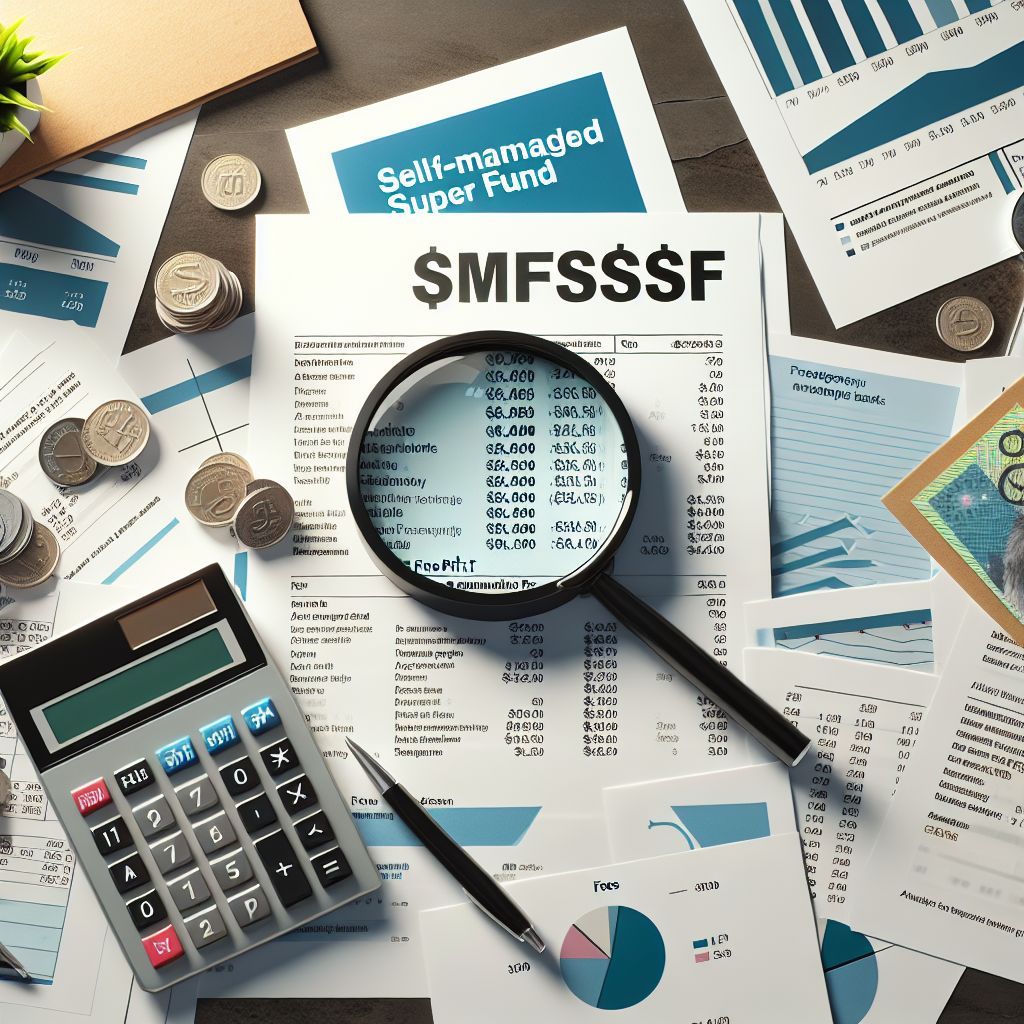Are you considering setting up a Self-Managed Super Fund? Before you take the plunge, make sure you understand the true costs involved. This comprehensive guide reveals the hidden fees that could significantly impact your retirement savings.
Picture this: After years of diligent saving and planning for retirement, you’ve decided to take control of your superannuation by establishing a Self-Managed Super Fund (SMSF). You’ve heard about the investment flexibility and control it offers, but what about the costs? Many Australians dive into the SMSF world without fully understanding the financial commitment involved, only to be shocked when unexpected fees start adding up.
Jane, a 52-year-old business owner from Brisbane, experienced this firsthand. “I thought setting up an SMSF would be straightforward with minimal costs. Six months in, I realized I’d underbudgeted by thousands. Those hidden costs really caught me off guard and impacted my retirement strategy.”
Jane’s experience isn’t unique. The reality is that SMSF setup costs and ongoing expenses can significantly impact your retirement savings if not properly accounted for. Let’s pull back the curtain on these costs so you can make informed decisions about whether an SMSF is right for your financial future.
Initial Setup Fees: The First Hurdle
Key Point: Initial setup fees typically range from $1,000 to $4,000 regardless of your investment amount.
The journey into SMSF territory begins with initial setup fees, which typically range from $1,000 to $4,000 depending on the complexity of your fund and the service providers you choose. These costs cover the establishment of your fund’s basic structure and registration with the Australian Taxation Office (ATO).
What many prospective SMSF trustees don’t realize is that these setup fees remain relatively consistent regardless of your investment amount. Whether you’re starting with $200,000 or $2 million, you’ll likely face similar establishment costs. This creates an interesting dynamic where SMSFs become more cost-effective as your balance grows.
The basic SMSF setup cost typically includes:
- Fund registration with the ATO
- Application for an Australian Business Number (ABN)
- Tax File Number (TFN) registration
- Electronic Service Address (ESA) setup for SuperStream compliance
- Setting up a dedicated bank account for the fund
Mark Sullivan, a certified financial advisor specializing in SMSFs, notes: “Many clients are surprised to learn that the initial SMSF setup cost is just the tip of the iceberg. I always advise them to budget between $1,500 to $2,500 for a standard setup, with additional costs if they opt for a corporate trustee structure.”
It’s worth mentioning that while some providers advertise “free” or low-cost SMSF setup, these offers often come with strings attached, such as mandatory ongoing administration services or higher fees in other areas. Remember the old saying: if it seems too good to be true, it probably is.
Legal Documentation Costs: The Fine Print Matters
Important: Legal documentation is not an area where cutting corners saves money in the long run.
Beyond the basic setup fees lies another significant expense: legal documentation costs. The trust deed is the cornerstone document of your SMSF, essentially serving as the fund’s constitution. This legal document outlines the rules for operating your fund and is crucial for compliance with superannuation laws.
A standard trust deed can cost anywhere from $350 to $800, but this price can increase substantially depending on the complexity of your fund structure and specific requirements. For instance, funds with specialized investment strategies or unique member circumstances may require more tailored documentation.
Additional legal documents that may be necessary include:
- Corporate trustee establishment (if you choose this structure): $800-$1,000
- Trustee minutes and resolutions: $200-$500
- Investment strategy documentation: $300-$700
- Binding death benefit nominations: $200-$400
These costs can vary significantly based on the legal provider you choose and the complexity of your arrangements. According to recent data, legal expenses for amending trust deeds can reach around $1,000, while establishing a corporate trustee structure might add another $800-$1,000 to your SMSF setup cost.
Lisa Chen, an SMSF specialist lawyer, explains: “Many trustees underestimate the importance of properly drafted legal documents. Cutting corners on your trust deed can lead to significant issues down the track, potentially costing much more to rectify than getting it right from the start.”
Ongoing Administration Fees: The Long-Term Commitment
Remember: Ongoing administration represents one of the largest expenses for your SMSF over time.
Once your SMSF is established, the financial commitment doesn’t end. Ongoing administration fees represent a substantial part of your fund’s expenses and can vary dramatically between service providers.
The ATO reports that median operating expenses for an SMSF are around $4,139 annually, including both deductible and non-deductible expenses. However, this figure can range from as low as $1,000 to well over $5,000 depending on the level of service and the complexity of your fund.
Standard administration services typically include:
- Annual financial statements preparation
- Member reporting
- ATO compliance and lodgments
- Tax return preparation
- Assistance with regulatory changes
When comparing administrators, it’s essential to understand exactly what services are included in the quoted fee. Some low-cost providers offer basic compliance services for around $1,000-$1,200 per year, while full-service administrators might charge $2,500-$4,500 but provide more comprehensive support and advice.
Sarah Williams, who established her SMSF three years ago, shares: “I initially went with the cheapest administrator I could find, only to discover they weren’t handling several critical compliance tasks. I ended up switching to a more comprehensive service that costs more but gives me peace of mind that everything is being handled correctly.”
The annual SMSF supervisory levy charged by the ATO (currently $259) is another ongoing cost that all funds must pay. This is a fixed cost regardless of your fund’s size or complexity.
When selecting an administrator, consider:
- Their experience and qualifications in SMSF administration
- The range of services included in their base fee
- Their track record with ATO compliance
- Communication style and accessibility
- Technology platforms and reporting capabilities
Remember that the cheapest option isn’t always the most cost-effective in the long run. Quality administration can help you avoid costly mistakes and penalties while maximizing your fund’s performance.
Investment Fees: The Hidden Wealth Eaters
Warning: Investment fees can be less obvious but potentially more significant over time than setup costs.
While setup and administration costs are relatively transparent, investment fees can be less obvious but potentially more significant over time. These fees relate to the actual investments within your SMSF and can substantially impact your returns.
The ATO reported median investment expenses for SMSFs in 2021-22 were $6,831, with average expenses reaching $11,609. This wide range reflects the diverse investment strategies SMSFs employ.
Common investment-related fees include:
- Brokerage fees for buying and selling shares
- Management fees for managed funds
- Property management fees for real estate investments
- Financial advisor fees for investment advice
- Insurance premiums for fund assets
These costs can quickly add up, especially if your SMSF is actively trading or investing in complex products. For instance, an SMSF invested primarily in listed shares might incur brokerage fees of 0.1% to 0.5% per transaction, while those holding managed funds might pay ongoing management fees of 0.5% to 2% annually.
David Thompson, an investment strategist at Aries Financial, emphasizes: “Investment fees are often overlooked in the total cost equation of SMSFs. We advise our clients to carefully consider these expenses when formulating their investment strategy. A well-structured portfolio can significantly reduce these costs while still achieving your retirement goals.”
To minimize investment fees:
- Consider low-cost index funds or ETFs for part of your portfolio
- Reduce portfolio turnover by adopting a long-term investment approach
- Negotiate brokerage rates if you’re an active trader
- Review managed fund fees regularly and compare alternatives
- For property investments, explore different management options
Understanding and managing these fees is critical to preserving your retirement savings and maximizing returns. Even a seemingly small percentage difference in fees can translate to tens or even hundreds of thousands of dollars over the life of your fund.
Variable Costs Across Service Providers: Shop Around
Cost-Saving Tip: Shopping around could save your SMSF thousands of dollars annually.
One of the most surprising aspects of SMSF costs is the significant variation between service providers. The same services can differ in price by thousands of dollars annually, making it essential to shop around and compare offerings.
For example, SMSF administration fees can range from as low as $990 per year with budget providers to over $4,000 with premium service firms. Similarly, audit fees might range from $350 to $800 for the same basic service.
When comparing providers, look beyond the headline price to understand:
- Exactly what services are included
- The level of personal support provided
- Experience and qualifications of staff
- Technology platforms and accessibility
- Additional charges for extra services
Robert Adams, who transitioned from a high-cost provider to a mid-range one, shares: “I was paying nearly $5,000 annually for SMSF administration before I realized I could get the same level of service for about $2,800. That’s an extra $2,200 staying in my retirement savings each year, which makes a huge difference over time.”
Industry data suggests that shopping around could save the average SMSF between $1,000 and $3,000 annually without compromising on service quality or compliance. That’s potentially $30,000 to $90,000 more in your retirement fund over a 30-year period!
Some providers offer tiered pricing based on your fund’s balance or complexity, which can provide cost advantages as your fund grows. Others might bundle services together, offering discounts compared to purchasing each service separately.
Making Informed Decisions: Knowledge is Power
Pro Tip: Being fully informed about costs is essential for making sound retirement planning decisions.
Understanding the full spectrum of SMSF setup costs and ongoing expenses is essential for making informed decisions about your retirement planning. Here are some practical steps to ensure you’re fully informed:
Request detailed fee schedules from multiple service providers, ensuring all potential costs are disclosed.
Calculate your total annual cost based on your specific circumstances and investment strategy.
Compare with alternatives such as industry or retail super funds to ensure an SMSF is cost-effective for your situation.
Consult with an independent financial advisor who specializes in SMSFs to get personalized advice.
Budget for unexpected expenses such as regulatory changes or complex investment transactions.
Michael Roberts, CEO of Aries Financial, advises: “We believe in empowering SMSF trustees with complete transparency about costs. An informed investor is a successful investor, and understanding the true cost of an SMSF is fundamental to making sound retirement planning decisions.”
The reality is that an SMSF may not be cost-effective for everyone. Generally, most financial experts suggest that you need at least $200,000-$500,000 in superannuation assets to make the fixed costs of an SMSF worthwhile, though this threshold varies depending on your specific circumstances and objectives.
Conclusion: Knowledge, Planning, and Professional Guidance
Final Thought: Balance the costs against the benefits when deciding if an SMSF is right for you.
Setting up and managing an SMSF can be a rewarding way to take control of your retirement planning, but it comes with significant financial responsibilities. By understanding the full spectrum of costs involved – from initial setup fees to ongoing administration and investment expenses – you can make informed decisions about whether an SMSF aligns with your financial goals. Is an SMSF worth the cost for you?
Remember that while costs are important, they should be considered alongside the benefits an SMSF can provide, such as investment flexibility, tax planning opportunities, and greater control over your retirement savings.
At Aries Financial, we believe in the principles of integrity, expertise, and empowerment when it comes to SMSF financing and management. Our approach focuses on providing transparent information and tailored solutions that help you navigate the complexities of SMSF management while maximizing your retirement outcomes.
Before taking the plunge into SMSF territory, arm yourself with knowledge, seek professional advice, and carefully consider whether the benefits outweigh the costs for your specific situation. Your future self will thank you for the diligence and care you take today in planning for a secure and prosperous retirement.
Need Help With Your SMSF?
Our team of SMSF specialists can provide personalized advice tailored to your situation. Contact us today for a no-obligation consultation.


